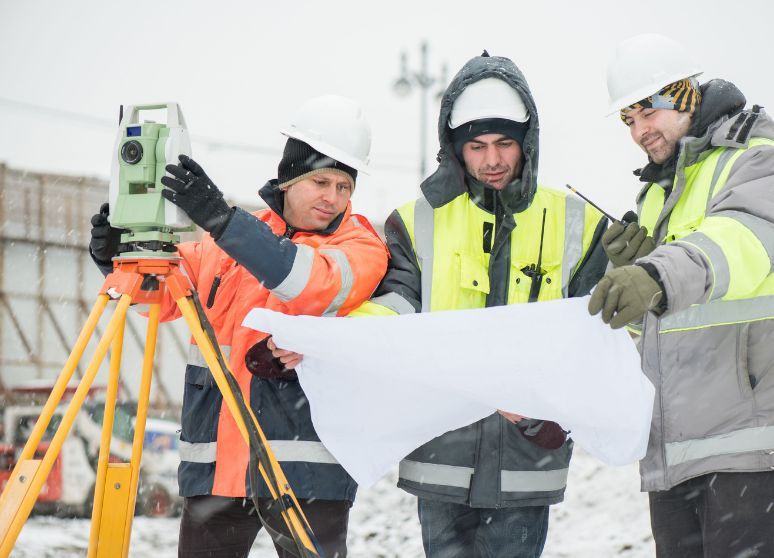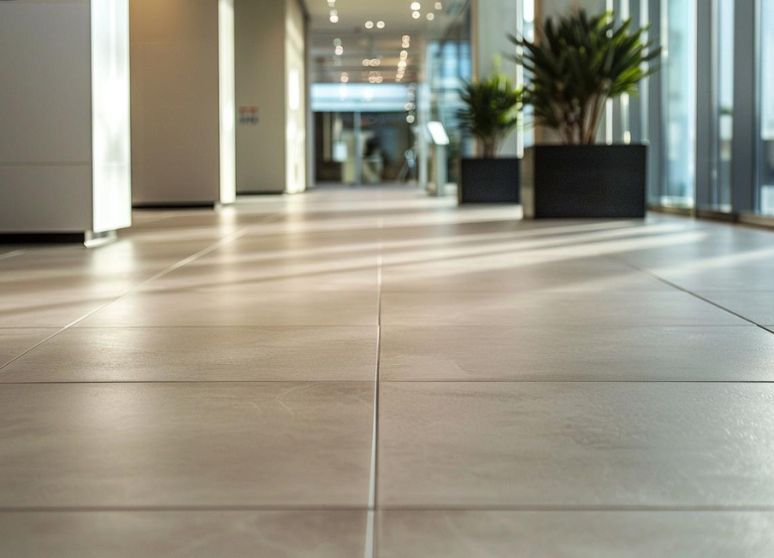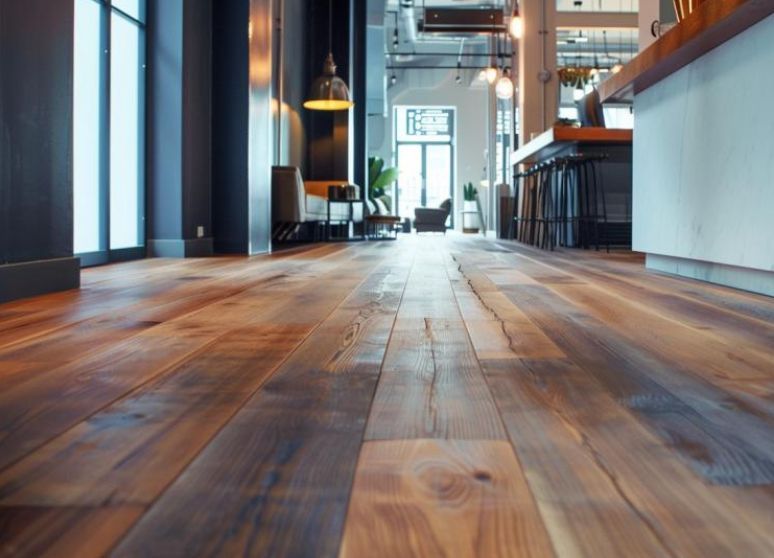
Stay Frosty: Safety Measures for Cleaning Construction Sites in Winter
Construction sites must be prepared and ready for any season, but winter presents unique set of challenges especially when it comes to clean-up. In this article, we’ll discuss the importance of preparing a construction site for winter clean-up, provide essential tools for safe winter construction site cleaning, recognize and prevent frost-related hazards, as well as best practices for de-icing and snow removal.
Preparing Your Construction Site for Winter Clean-Up
Preparing Your Construction Site for Winter Clean-Up is an essential part of the construction process. It is important to identify potential hazards and take the necessary steps to ensure that the site is prepared for the winter season. This involves both pre-emptive and reactive measures. However, the process begins by assessing the area. It is important to review the surrounding environment and take into consideration any environmental factors that could potentially affect the site. This could involve potentially dangerous weather patterns, trees and buildings, or other factors that could disrupt normal operations.
The next step in the process is to inspect the premises. This involves going through the compound to check for potential hazards and any damaged materials or equipment that needs to be removed. Additionally, any surrounding structures or pathways need to be inspected to determine their stability, and any potential risks associated with the site. It is also important to identify any areas that could benefit from an additional layer of insulation that will help protect the construction site from harsh winter weather, as well as areas that need additional lighting and safety equipment.
On the other hand, the winter clean-up is only complete once any hazardous materials and equipment have been removed. This could include removing any combustible materials, as well as anything that is flammable. Additionally, any outdated materials should be disposed of, as well as any dead or decaying vegetation that could potentially provide shelter for small animals or insects. The construction site should be checked for any potential blockages that could lead to flooding and damage to the construction site.
In addition, it is important to ensure that the site is monitored throughout the winter season. This could involve the use of weather monitoring equipment and alarms that can alert the team of any hazardous weather conditions. Additionally, any vegetation or structures that could be impacted by extreme weather should be monitored to ensure that they remain secure. Similarly, any heavy machinery should be inspected and maintained regularly to help minimize the risk of potential damage or malfunction during winter.
Taking the necessary steps to ensure that the construction site is prepared and ready for winter is critical for ensuring that operations can run smoothly. By undertaking the necessary preventative measures, it is possible to reduce the risk of damage from extreme weather and hazardous materials. Similarly, having a plan and system in place to monitor the conditions of the site during the winter season should help to ensure that the site remains secure and operations can run efficiently. Proper preparation and monitoring can help ensure that the construction site is ready for the winter season.
Essential Tools for Safe Winter Construction Site Cleaning
Winter construction site cleaning requires specific tools and equipment to ensure the job is done safely. Glow sticks, a flashlight, and reflective clothing should be worn at all times during cleanup to indicate the presence of workers on site. In addition, having appropriate protection from the cold weather should be prioritized, such as a coat or gloves. However, the bulk of essential tools are related to preventing falls, slips, and cold weather injuries. For instance, a high-visibility vest and hard hat should be worn to protect against construction debris and dangerous surfaces. Furthermore, having non-slip footing is also important when working in the winter to ensure workers feel stable while moving throughout the site. In contrast to this, workers should also take extra care when working around large bodies of water in the winter, as they can freeze and be hazardous.
Similarly, workers should also use extra caution when climbing ladders and navigating stairs in winter conditions. Having a ladder stabilizer can help improve footing and reduce the risk of serious injury due to a fall. In addition to this, setting up guardrails around the construction site is important to help prevent trips and slips, with chained barriers being especially helpful in snowy or wet conditions. As a result, by having all of these essential items and tools, workers can mitigate the safety risks of working on a construction site in the winter. Consequently, suggesting that employers invest in these tools is an important part of establishing a safe working environment.
Recognizing and Preventing Frost-Related Hazards
Frost-related hazards can cause considerable property and crop damage if they are not identified and prevented. However, by understanding how frost forms, being aware of the weather patterns that are conducive to frost, and taking proper precautions, we can lessen the impacts of frost.
In addition, it is important to understand frost’s impacts on plants and crops. Strong winds and cold temperatures can cause rapid cooling, while warm, moist air can create condensation on nearby surfaces. Frost formation can be exacerbated when there is an inversion layer and still air. Therefore, an essential part of preventing frost damage is avoiding letting sites get too cold, as well as safeguarding them from wind damage.
Best Practices for De-icing and Snow Removal on Construction Sites
Snow and ice can be a difficult nuisance to manage on a construction site in the winter months. In order to ensure the safety and efficiency of the job site, best practices for dealing with ice and snow are essential. Firstly, making sure the area is clear of snow and ice must be a priority. Involving the use of snow blowers and shovels to clear pathways and roads is essential for the movement of personnel and equipment. Secondly, applying de-icing agents such as calcium chloride is important for combatting the effects of snow and ice. However, it is important to note that the construction site should be aware of any area of the environment that might be affected by the de-icing salt.
Ensuring that snow and ice removal is conducted regularly is key to the safety and efficiency of the job site. Snowfall must be consistently monitored to ensure that ice and snow do not accumulate in areas of high foot traffic, or lead to unsafe conditions. Regular salt application can help to dissolve the ice and snow in the early stages, which prevents the buildup of dangerous conditions. Similarly, making use of specialized traction agents such as anti-skid sand can help personnel and equipment to move safely, without the fear of icy conditions.
As a result, communication must be maintained between the site supervisor and personnel to ensure that conditions are monitored and safety protocols adhered to. Making use of proactive tools like weather forecasts and radar can help to anticipate the formation of ice and snow and help get ahead of any potential safety risks or inefficiencies. In addition, if any severe weather conditions are forecasted, taking appropriate action is essential to minimize the risk to the personnel and the job site at large.
Constructing a proactive management plan with the use of de-icing, snow removal, and the communication of weather conditions is essential to the safety and efficiency of the job site. Implementing these practices requires careful consideration, however, when followed correctly, will ensure safe conditions throughout the winter months.
Final Thoughts
Preparing construction sites for winter entails a lot of careful and diligent planning and execution. There are a number of essential tools that are necessary for safe winter clean-up, which includes: snow shovels, protective clothing, snow blowers, and trucks. Additionally, there are a number of frost-related hazards that can cause damage on construction sites: the formation of ice, the growth of ice from existing ice layers, frost heaving, and the trapping of moisture. The best practices for de-icing and snow removal should also be taken into account to avoid any accidents and further damage. Taking all of these elements into consideration, construction sites will be safe and secure for the upcoming winter season. MAK Cleaning is here to help with your construction site cleaning needs.
FAQ
How can I ensure the safety of my team during winter construction site cleaning?
Ensuring the safety of your team during winter construction site cleaning is crucial. Here are some tips:
- Training: Provide your team with proper training on winter-specific hazards and safety protocols.
- Personal Protective Equipment (PPE): Ensure that your team wears appropriate winter PPE, including insulated clothing, gloves, and non-slip footwear.
- Snow and Ice Removal: Keep walkways, stairways, and work areas clear of snow and ice. Use snow blowers, shovels, and de-icing agents as needed.
- Visibility: Ensure good visibility by using adequate lighting and reflective clothing.
- Communication: Establish clear communication channels and emergency procedures, especially in case of adverse weather conditions.
- Regular Inspections: Conduct frequent site inspections to identify and address potential hazards promptly.
What are the most common winter-related hazards on a construction site?
Winter introduces unique hazards on construction sites, including:
-
-
- Slip and Falls: Icy and snowy surfaces can lead to slip and fall accidents.
- Frostbite and Hypothermia: Exposure to cold temperatures can cause frostbite and hypothermia.
- Reduced Visibility: Snow and fog can reduce visibility, increasing the risk of accidents.
- Icy Equipment: Machinery and equipment may become less reliable or more dangerous in cold conditions.
- Snow Accumulation: Accumulated snow can add weight to structures, leading to potential collapses.
-
Are there specific tools recommended for winter construction cleaning?
Yes, some tools and equipment are particularly useful for winter construction site cleaning:
- Snow Blowers: Snow blowers are efficient for clearing large areas of snow quickly.
- Shovels: Snow shovels are essential for manual snow and ice removal.
- De-Icing Agents: Use salt or other de-icing agents to melt ice on walkways and roads.
- Insulated Clothing: Provide your team with insulated clothing, including waterproof boots and thermal gloves.
- Snow Brushes and Ice Scrapers: These are handy for cleaning snow and ice from vehicles and equipment.
How often should a construction site be cleaned during the snowy season?
The frequency of cleaning during the snowy season depends on the intensity of snowfall and the specific needs of your construction site. In general, it’s advisable to clean the site:
- Daily: Clear walkways, stairs, and emergency exits of snow and ice to prevent slip and fall hazards.
- As needed: Regularly inspect the site and clean up snow or ice accumulation on machinery, equipment, and structures.
- During and after storms: Increase cleaning frequency during heavy snowfall and ensure that the site is thoroughly cleaned after storms to maintain safety and productivity.
Table of Contents
Other Blogs You May Be Interested In
Categories










Leave a Reply